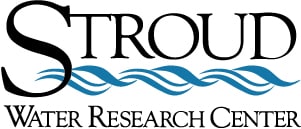Last updated on 2022-09-28
Please note: Model My Watershed’s Watershed Multi-Year Model is now the primary framework for running the latest GWLF-E model version. It has replaced MapShed and BASINS because those desktop applications were built on the aging MapWindow GIS package that is no longer supported. If you have questions beyond what is provided in this documentation, please contact us so that we can connect you with MapShed developer Barry Evans, Ph.D.
Alternatively, you can run the latest version in Model My Watershed.
Dr. Barry Evans and his group at Penn State Institute of Energy and the Environment worked to improve the ArcView Generalized Watershed Loading Function (AVGWLF), a GIS-based watershed modeling tool that uses hydrology, land cover, soils, topography, weather, pollutant discharges, and other critical environmental data to model sediment and nutrient transport within a watershed.
AVGWLF has been used for federally-mandated total maximum daily load (TMDL) studies in Pennsylvania since 1999, and regionalized versions of this software have been developed for EPA Region 6 in the southwestern part of the U.S., in New York state, and for New England. AVGWLF has been used by the Mexican Institute of Water Technology for various watershed studies since 2000, and it has been used by other governmental agencies and scientists located throughout the world.
To extend the utility of this software, a major revision was undertaken to move the tool from a commercial GIS software package to a free one called MapWindow. The new software was named MapShed, and it expanded the use of this type of modeling tool to a much larger number of users, many of whom do not have the means to purchase the commercial GIS software needed for AVGWLF.
In addition to the GIS platform upgrade, numerous analytical tools were enhanced to provide additional modeling capabilities such as the simulation of pathogen loads, better simulation of pollutant transport processes in urban settings, and improved assessment of the effects of best management practice implementation on pollutant load reduction.
